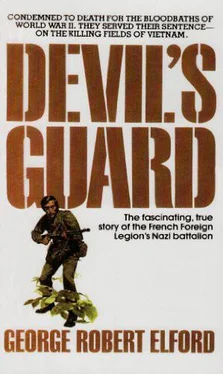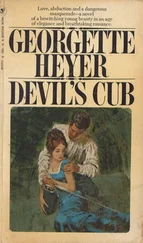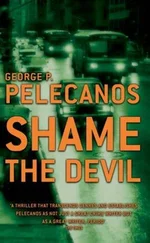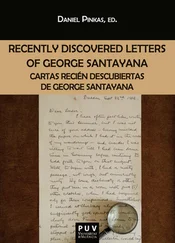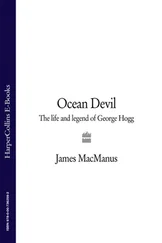Now I found nothing extraordinary about those villagers except the fact that all the men were in their prime. We would always pay particular attention to young men laboring in the fields in what was strictly Viet Minh-controlled territory, where most young men had been recruited by the guerrillas either as full-time or chance “freedom fighters”—depending on how hard-pressed the Viet Minh was for manpower in a particular area.
Remaining out of sight, my troops deployed near the paddies to keep every individual covered by a dozen guns. It may seem excessive that heavily armed troops should bother with elaborate defensive measures while facing but a few unarmed peasants. But to those who are familiar with the implications of guerrilla warfare no precaution appears superfluous. It often happened that a group of “innocent noncombatants” had turned into well-armed terrorists the moment the troops slackened their vigilance.
Numerical inferiority would deter the fanatical terrorists no more than the thought of certain death would deter the Japanese kamikaze. Properly indoctrinated Communists (and especially the primitive, illiterate ones) will do what the Party says. We found that the most wicked and dangerous guerrillas were the so-called “peasant-cum-guerrillas,” including women and children from ten years up. We had had scores of engagements with such naive, untrained, and inexperienced “noncombatants,” who would always win, even when licked and exterminated to the last man. When the Viet Minh was unable to claim any success by the force of arms, the commissars always secured at least a political victory. Their formula was a simple one. Had their peasant-cum-guerrillas managed to rout a French garrison, the Communist victory was widely publicized. But when the Legion squashed them somewhere, the fallen terrorists were stripped of military equipment, their corpses were rearranged (often with arms and legs bound with ropes), then photographed and displayed to friend and foe alike as the “innocent victims of a French massacre.”
To increase the dramatic effect of such “colonialist carnages” the corpses of women and children who had died of diseases or natural causes would sometimes be put on display alongside the bodies of the dead guerrillas. We found evidence that the Viet Minh had exposed over two hundred corpses in a village that had been demolished by the Air Force. That particular “French monstrosity” had been widely publicized. In reality, for several days preceding the raid the village had been devoid of human presence, and all the bombers wrecked were the empty huts. The “innocent victims” had in fact been the victims of a typhus epidemic that decimated the population weeks before the air raid. Blinded by hatred and devoid of all human sentiment, the local Viet Minh commissar had ordered his men to exhume the corpses, sprinkle them with cattle blood, blow some of them to bits with grenades, dump them all over the devastated village, then credit two hundred “innocent victims” to the French. And since there had indeed been an officially recorded attack on the village (the close results of which could not be established) the reconnaissance and fighter-bomber crews were severely reprimanded, demoted, or relocated because of their “senseless slaughter of civilians.”
A few months after that infamy, Bernard Eisner and Pfirstenhammer captured the commissar responsible, who, after some tender persuasion, told us the true story and even signed a written statement. Needless to say, our evidence was never given any publicity and thus could not exonerate the condemned airmen. In our days only the French “crimes” received blaring headlines. The Viet Minh atrocities (far more numerous and excessive) were given a few back-page lines once in a while. But history repeats itself. Nowadays the American GI enjoys a similar treatment. The Communists cannot lose.
Erich Schulze, Sergeant Krebitz, and I removed our boots and waded into the stagnant water, taking only Gruppe Drei. We may have caused the peasants a few sinister thoughts but we certainly delighted the local leeches which could suck a man dry as well as strangle him to death, according^ to Erich. The people now stopped working; they rose and observed our approach for a while, then began to press closer together.
“Chieu hoi.”
Some of them returned our greeting. Others stood in sullen silence, the women a good ten yards behind the men. A good-looking lean fellow in his early thirties stepped forward, ran his tongue over his betel-stained lips, then spoke. “My name is Van Ho Tien and I can speak French,” he announced casually. “My companions know no French.”
He paused for a moment, then added with a tinge of mockery in his voice, “What do you wish to know, officer?”
“I haven’t asked you any question, have I?” I answered jokingly and offered him a cigarette, which he accepted with a slight bow.
“Oh, the army always wants to know something,” he said. “Maybe you want to know if we’ve seen the Viet Minh lately, but we have not seen them for many weeks.”
“And that’s the standard answer number one around here, isn’t it?” Erich cut in with a broad grin on his face. “We saw nothing we heard nothing, we know nothing. You must be quite happy, they say God provides for the ignorant ones. Now come, come, Monsieur Van Ho Tien, when was the last time the Viet Minh visited your village?”
“We are very few people and our village is unimportant to the Viet Minh.”
“Lucky for you,” commented Erich. “Where is your village anyway?” Van Ho waved a casual hand toward the low hills a few miles distant. “There beyond, two hours” walk from here, officer.”
Then he quickly added, “But we have no road.”
This sudden addition of his sounded so funny that we all broke into laughter.
“How are you coining and going then,” Schulze chuckled, “Thumbing rides on army copters?”
“Oh, I didn’t mean that,” said Van Ho, “we have a few narrow trails.”
“Very precipitous and slippery at places, I presume,” Riedl interposed. “Maybe even mined here and there?”
“No!” Van Ho protested, taking Riedl’s teasing remark in earnest. “We have no mines, no weapons—nothing we have.”
He appeared to dislike the direction our conversation had taken. “Our village is very tiny, very filthy, and very poor with many sick people in it. There is nothing to see.”
We laughed again and Van Ho’s face reddened as he realized the childish quality of his remark.
“Don’t worry, Monsieur Van Ho Tien.”
Erich tapped him lightly on the shoulder. “We don’t want to visit your village. It seems to be out of our way.”
I checked the location of Van Ho’s village on Schulze’s map, a very special one, which due to his meticulous recording of various significant landmarks revealed a great deal more information than the regular army maps. The village was marked on it all right, with the numbers 12/15 indicating the number of dwellings. But placed alongside the numbers a tiny red star caught my attention and I asked Erich about it.
“I recorded the village from air reconnaissance of the area,” he explained. “Here the star means that peculiar movements were observed in and about the hamlet which could be associated with guerrilla activities but not proven.”
“I see____” I wheeled back toward Van Ho and now asked him bluntly, “Are there any Viet Minh cadres in your village?”
“Our village is very small,” he repeated after what I thought was a slight hesitation. “Only fourteen dwellings with forty- men. The Viet Minh knows that we could be of little help to them and they leave us alone. We hope the French, too, will leave us alone.”
“And we hope we can oblige,” Schulze retorted. “Believe me, the last thing on earth we care to see is a local village.”
Читать дальше
